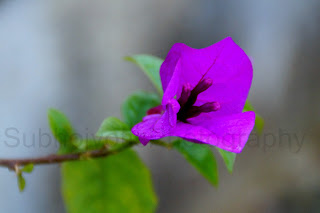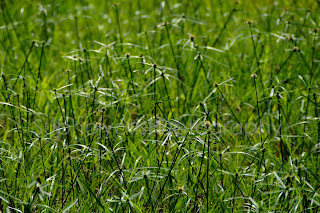Although
Borneo boasts of one of the largest and most bio diverse landmass of
rainforests in the world, yet my first impression was disapprovingly
challenged. Our starting point of historical border town Kuching has lost most
of its rural heritages in the process of gentrifying - nature has been stripped
in place of the flurry of budding industries, and wildlife displaced in
the unaware human throng.
The
bed and board choice was wonderfully comfy with the outstanding Borneo Highland
Resort giving an immersive, authentic experience. Old-style small wooden
chalets with 1-2 bedrooms opening out on the sun terrace are spruced up with
sprung mattresses, thick comforters and en-suite shower rooms. Peaceful
it was to observe the undulating Borneo golf course on that full moon night,
from my shaded, pillowed lounge on the chalet’s porch.
My
husband was still more hopeful to see the greener and wilder Borneo the next
day. I couldn’t sleep that night – my heart thrashing the chest and mind
introspecting this Borneo decision. Time stood still. I looked out of the
window undecidedly – the wind hardened, it was half past eleven!
My
notes were spotless as I read in the morning - ‘Borneo is split up into three
parts, Sabah and Sarawak which are in the Malaysian part of the island, then
Kalimantan on the Indonesian side of Borneo. The sultanate of Brunei is a
separate country that sits in between Sabah and Sarawak.’
A
foggy humid morning greeted us with light spell of rains, we put on the rain
coats and boots. Loaded everything aboard and headed to cover Sarawak (and
Kalimantan on the next day).
I
have been to a lot of mountains while in India – the ideal visions of the
landscape peppered with piles of stones, juniper bushes, white-washed peak,
prayer flags carrying worship on the winds – did not match. I was startled to
see so much of green on all my sides - pristine nature that defy
predictability, deep, dark, steamy jungles to tranquil, imposing mountain tops,
where everywhere seemed to be a part of a uninterrupted high definition
wildlife documentary. That was the road leading up to Sarawak highlands.
It was euphoric to be able to have my hands wet in the passing fluffy white
clouds (I could just lie here all day, and watch them float by with winds
stroking my face fondly). What a welcome!
Nature
unfolded its untamed wilderness in a significantly less touristy quarter. Every
bit the Eden that it was - uncultivated – natural. A treat to all my senses. I
could not wait to explore. That night was a sleepless one again – excitement
all over. I quickly ran through my notes.
The
first time we took the weight off our feet and stared into the jungle in
silence, waiting to hear the crash of creaking, breaking branches and see the
flash of orange fur - the first sight of an Orang Utan in the wild - was almost
supernatural (yes, it is, with so many legends around regarding the orange old
man of the jungle and then suddenly when you see – surreal is the correct word).
There
are a number of rehabilitation centres and national parks throughout Borneo
where it is possible to do this. Regrettably some of them are awfully touristy
(hence, we skipped the Sepilok Orang Utan rehabilitation centre in Sabah and
opted Semenggoh in Sarawak which do emphasise conservation and minimise tourist
impact on the Orang Utans whilst balancing the fact that they need the MONEY in
order to function) .
SEMENGGOH
WILDLIFE CONSERVATION PARK
The
primary purpose here is to protect, care for and rehabilitate wild animals that
have been injured, orphaned, mistreated in captivity or otherwise displaced.
Here we observed the partly wild Orang Utan in the wild at afternoon feeding
time.
TANJUNG
PUTING NATIONAL PARK
Located
on the tip of Kalimantan, on the Indonesian side of Borneo, this stunning park
is one of the best places in the world to see Orang Utans and other tropical
rain forest creatures in their natural milieu as you sail idly down the banks
of the Sekonyer river on a ferry.
Kalimantan
is a very different innate to its Northern neighbours. More rugged, less
developed with far less infrastructure, this is the Borneo that people imagine
when they dream of intrepid explorers hacking their way through jungles and
coming across undiscovered tribes.
Sabah,
Sarawak and Kalimantan – although all part of Borneo – are all semi-autonomous
states in their own individual rights, so each has their own immigration border
controls and you will have to go through immigration every time you cross a
border. That goes for Brunei as well. Guides and permits are a must while
visiting any part of Borneo, and the costs of these will as well as transport
are a lot compared to the rest of Borneo or Indonesia.
We
also took a night safari along the highlands of Malaysian Borneo – it was
two-sweaters and a scarf cold that night and I had swelling and discomfort due
to leech bites that morning. Safari was rewarding with some exceptional species
of creepy-crawlies to spot but we could not complete the safari and had to rush
back – the chills and fever ruined the show. The husband had a wakeful and I, a
fever-smitten unconscious night.
The
next day, we had our flight back to KL, my body ached but eyes spangled, we
both were contented – unbeatably first-hand experience – bagging some
spectacular shots to our credit. Two happier souls going back home with oodles
of heavens in the heart to share - tasting Borneo was the best thing we ever
did.
We
went expecting a Borneo…we came back with an experience much grander and more
recompensing!
One
word of caution that we learned from our experiences - travellers are strongly
recommended to be up to date on their routine vaccinations including MMR,
diphtheria, chicken pox, hepatitis A, typhoid and dengue fever.




























No comments:
Post a Comment